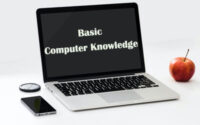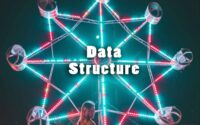Computer Networks Typical Questions and Answers
The Free download links of Computer Networks Typical Questions and Answers Papers enclosed below. Candidates who are going to start their preparation for the Computer Networks Typical papers can use these links. Download the Computer Networks Typical Papers PDF along with the Answers. Computer Networks Typical Papers are updated here. A vast number of applicants are browsing on the Internet for the Computer Networks Typical Question Papers & Syllabus. For those candidates, here we are providing the links for Computer Networks Typical Papers. Improve your knowledge by referring the Computer Networks Typical Question papers.

Typical Questions and Answers on Computer Networking
1. ARP (address resolution protocol) is
(a) a TCP/IP protocol used to dynamically bind a high level IP address to a low-level physical hardware address.
(b) a TCP/IP high level protocol for transforming files from one machine to another.
(c) a protocol used to monitor computers
(d) a protocol that handles error and control messages
2. ICMP (Internet Control Message Protocol) is
(a) a TCP/IP protocol used to dynamically bind a high level IP a address to a low-level physical hardware address.
(b) a TCP/IP protocol high level protocol for transferring files from one machine to another
(c) a protocol used to monitor computer
(d) a protocol that handles error and control messages
3. HMP (Host Monitoring Protocol) is
(a) a TCP/IP protocol used to dynamically bind a high level IP address to a low-level physical hardware address
(b) a TCP/IP high level protocol for transferring files from one machine to another
(c) a protocol used to monitor computers
(d) a protocol that handles error and control messages
4. Which of the following TCP/IP protocol is used for transferring files from one machine to another ?
(a) RARP
(b) TCP
(c) ARP
(d) FTP
5. Which of the following TCP/IP protocol is used for file transfer with minimal capability and minimal overhead ?
(a) RARP
(b) TFTP
(c) FTP
(d) TELNET
6. Which of the following TCP/IP protocol is used for remote terminal connection services?
(a) TELNET
(b) RARP
(c) FTP
(d) UDP
7. Which of the following TCP/IP protocol allows an application program on one machine to send a datagram to an application program on another machine?
(a) UDP
(b) X.25
(c) VMTP
(d) SMTP
8. Which of the following TCP/IP protocol is used for transferring electronic mail messages from one machine to another?
(a) FTP
(b) SMTP
(c) SNMP
(d) RPC
9. Which of the following TCP/IP protocol is used to monitor IP gateways and the networks to which they attach?
(a) SGMP
(b) SUMP
(c) FTP
(d) Both (a) and (b)
10. Which of the following techniques is used in systems to avoid endlessly looping packets ?
(a) A technique used by protocols in which a lower level protocol accepts a message from a higher level protocol and places it in the data portion of the low level frame
(b) One of the pieces that results when an IP gateway divides an IP datagram into smaller pieces for transmission across a network that cannot handle the original datagram size
(c) Both (a) and (b) above
(d) None of the above.
11. Which of the following technique is used for fragment ?
(a) A technique used in best effort delivery systems to avoid endlessly looping packets
(b) A technique used by protocols in which a lower protocol accepts a message from a higher level protocol and places it in the data portion of the low level frame.
(c) One of the pieces that results when an IP gateway divides an IP datagram into smaller pieces for transmission across a network that cannot handle the original datagrams size
(d) All of the above
12. Which of the following technique is used for time-to-time (TTLI) ?
(a) A technique used in best-effort delivery system to avoid endlessly looping packets.
(b) A technique used by protocols in which a lower level protocol accepts a message from a higher level protocol and places it in the data portion of the low level frame.
(c) One of the pieces that results when an IP gateway divides on IP datagram into smaller pieces for transmission across a network that cannot handle the original datagram size.
(d) All of the above
13. The Internet Control Message Protocol (ICMP)
(a) allows gateway to send error a control messages to other gateways of hosts
(b) provides communication between the Internet Protocol Software on one machine and the Internet Protocol Software on another
(c) only reports error conditions to the original source, the source most relate error to individual application programs and take action to correct the problems
(d) all of the above
14. Which of the following statements are incorrect ?
(a) Gateways are assumed to know correct route, hosts begin with minimal routing information and learn new routes from gateways
(b) Layered protocol are designed so that layer in at the destination received exactly the same object rest by layer n at the source
(c) Application programs as well as all software (protocol) from the internet layer upward use only IP addresses, the network interfere layer handles physical address
(d) All of the above.
15. How many A, B, and C network Ids can exists?
(a) 2, 113, 658
(b) 126
(c) 16, 382
(d) 128
16. Which of the following program is used to copy files to or from another UNIX time-sharing system over a single link?
(a) VMTP
(b) UUCP
(c) TFTP
(d) UART
17. Which of the following device copies electrical signals from one ethernet to another?
(a) Bridge
(b) Hub
(c) Repeater
(d) Passive hub
18. A machine that connects to two or more electronic mail systems and transfers mail messages among them is known as
(a) Gateways
(b) Bridges
(c) mail gateways
(d) user agents
19. The term duplex refers to the ability of the data receiving stations to echo back a confirming message to the sender. In full duplex data transmission, both the sender and the receiver
(a) cannot talk at once
(b) can receive and send date simultaneously
(c) can send or receive data one at a time
(d) can do one way transmission only
20. What is the minimum number of wires required for sending data over a serial communications lines?
(a) 2
(b) 4
(c) 1
(d) 3
| Practice Question | Objective Papers |
| Quiz | Important Papers |
| Mock Tests | Previous Papers |
| Typical Question | Sample Question |
| MCQs | Model Papers |
21. Which transmission mode is used for data communication along telephone lines?
(a) Parallel
(b) Synchronous
(c) Serial
(d) Asynchronous
22. What is the usual number of bits transmitted simultaneously in parallel data transmission used by microcomputers?
(a) 9
(b) 16
(c) 8
(d) 4
23. What are the most commonly used transmission speeds in bps used in data communication ?
(a) 300
(b) 2400
(c) 1200
(d) 9600
24. Many large organizations with their officers in different countries of the world connect their computers through telecommunication satellites and telephone lines. Such a communication network is called
(a) LAN
(b) ECONET
(c) WAN
(d) EITHERNET
25. Working of the WAN generally involves
(a) Microwaves
(b) Telephone
(c) Satellite
(d) all of the above
26. A communication network which is used by large organizations over regional, national or global area is called
(a) LAN
(b) WAN
(c) MAN
(d) Internet
27. When a group of computers together in a small area without the help of telephone lines, it is called
(a) Remote Communication Network (RCN)
(b) Local Area Network (LAN)
(c) Wide Area Network (WAN)
(d) Value Added Network (VAN)
28. A modem is connected in between a telephone line and a
(a) Network
(b) Computer
(c) communication adapter
(d) serial port
29. Now a days computers all over the world can talk to each other. Which accessories essential for this purpose ?
(a) Keyboard
(b) Scanner
(c) Modem
(d) Fax
30. Modem is used in data transmission. When was it invented and in which country?
(a) 1963, USA
(b) 1950, USA
(c) 1965, Germany
(d) 1950, Japan
31. A network which is used for showing data, software and hardware among several users owing microcomputers is called
(a) WAN
(b) MAN
(c) LAN
(d) VAN
32. Different computers are connected to a LAN by a cable and a/an
(a) Modem
(b) special wires
(c) interface card
(d) telephone lines
33. When you connect to an on-line information service, you are asked to provide some kind of identification such as your name, an account number and a password. What is the name given to this brief dialogue between you and the information system?
(a) security procedure
(b) safeguard procedure
(c) identification procedure
(d) log-on procedure
34. When two computers communicate with each other, they send information back and forth. If they are separated by a reasonable distance, they can send and receive the information through a direct cable connection which is called a null-modem connection. Presently what is the maximum distance in metres permitted in the null-modem connection?
(a) 80
(b) 30
(c) 100
(d) 180
35. For connecting modem, a computer must be equipped with a port that conform to the RS. 232 standard of the electronic industries, Association of America. What do the letters RS. stand for?
(a) Recognised standard
(b) Recommend standard
(c) Random sequence
(d) Registered source
36. smart modem can dial, hand up and answer incoming calls automatically. Can you tell who provides the appropriate instruction to the modem for this purpose ?
(a) Communications software
(b) Link detecting protocols
(c) Error detecting protocols
(d) Telecommunication
37. Which of the following data transmission media has the largest terrestrial range without the use of repeaters or other devices ?
(a) Hard wiring
(b) Microwave
(c) Satellite
(d) Laser
38. What are the transmission channels available for carrying data from one location to another.
(a) Narrow band
(b) Broad band
(c) Voice band
(d) All of the above
39. What function does a serial interface performs in data communication?
(a) Converts serial data into audio signals
(b) Converts analog signals into digital signals
(c) Converts parallel data into a stream of bits
(d) Decodes incoming signal into computer data
40. In a PC to telephone hook up for long distance, communication modem is connected between the telephone line and
(a) PC
(b) cross over cable
(c) synchronous port
(d) asynchronous port
41. The word telematics is a combination of
(a) Computer
(b) Informatics
(c) Telecommunication
(d) both (b) and (c) above
42. An ROP would be attached
(a) simple channel
(b) half duplex channel
(c) duplex channel
(d) full duplex channels
43. A batch processing terminal would not include a
(a) CPU
(b) card punch
(c) card reader
(d) line printer
44. When UPC is used, the price of the item is located
(a) on the item.
(b) on computer storage
(c) on the item and on the shelf
(d) on the shelf and in computer storage
45. Transmission of computerised data from one location to another is called
(a) data transfer
(b) data communication.
(c) data flow
(d) data management
46. “Store and forward” applies to
(a) distributing process
(b) Time-sharing
(c) both (a) and (b) above
(d) none of the above.
47. The term “remote job entry” relates to
(a) real time processing
(b) batch processing
(c) transaction processing
(d) distributed processing
48. Terminal are used to
(a) collect data from the physics’ system
(b) provide information for the manager
(c) communication management decisions to the physical system
(d) all of the above
49. An example of digital, rather than analog, communication is
(a) DDD
(b) WATS
(c) DDS
(d) DDT
50. A hard copy would be prepared on a
(a) typewriter terminal
(b) potter
(c) line printer
(d) all of the above



